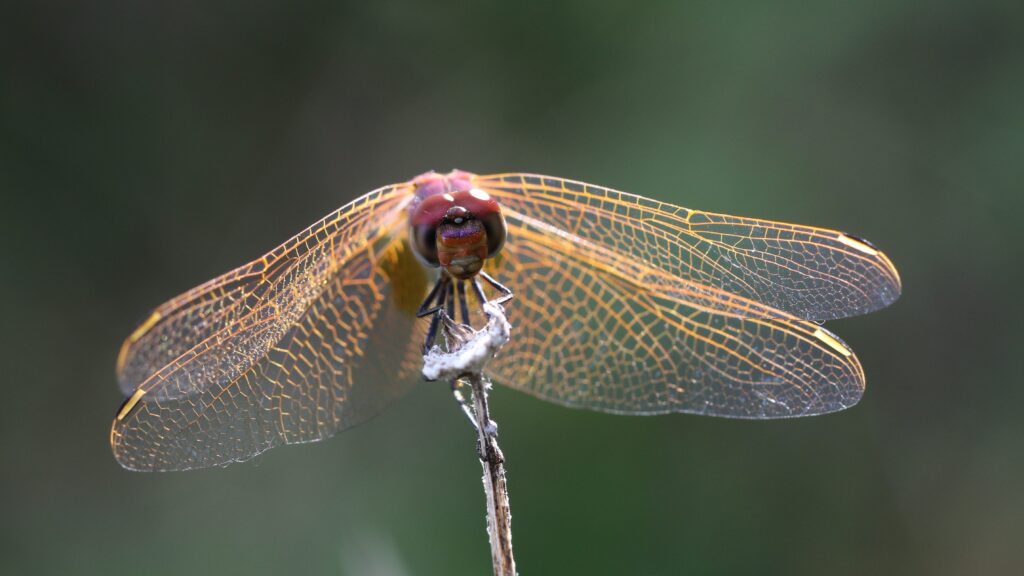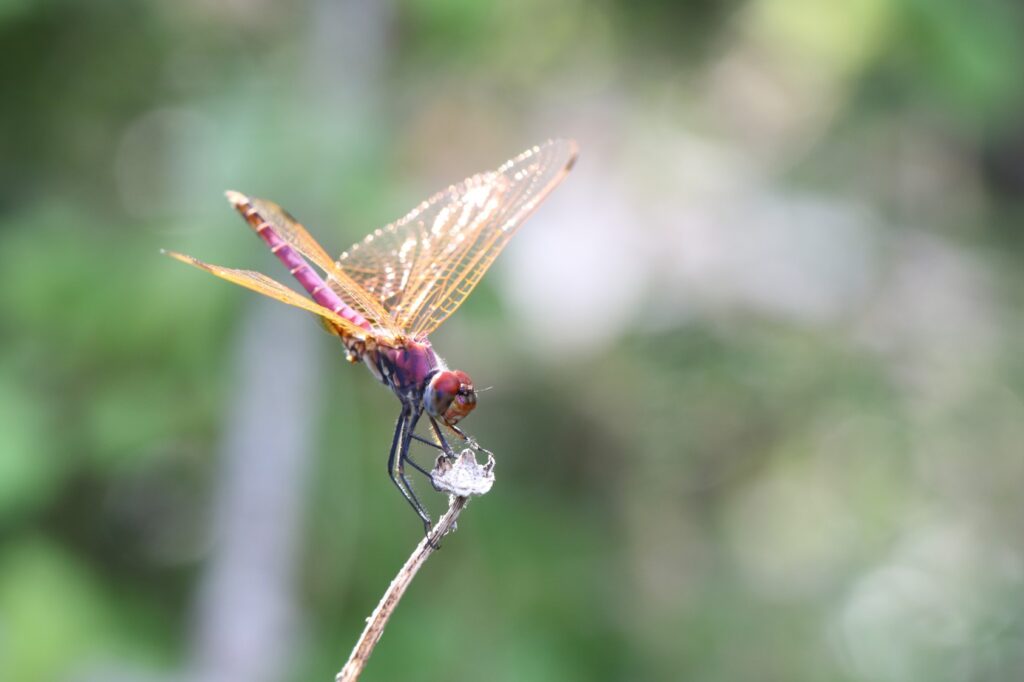
The scientist and the naturalist in me are nearly always in agreement; what I find fascinating as a naturalist, I want to study as a scientist. Nevertheless there is one topic that causes problems; climate change.
In summer 2019, I visited the Provence. Not for the first time. I’ve been there many times and it is no secret that it is one of my favorite vacation destinations. But still, even though I’ve been there countless times, nature always manages to surprise me in some way or another. Much like this time. While taking a lunch break next to a lovely small lake, a dragonfly landed right next to me on a stick. The species was the Violet Dropwing, or trithemis annulata. I had stared at the species’ page in my dragonfly field guide many times, but had never actually seen it. So gone was all the peace and quiet – I mean, who wouldn’t be excited when they encounter this purple beauty for the first time! Heart racing, I grabbed my camera and started taking pictures. I was completely amazed and exited to find the species.
Yet there was a reason I had never before seen this species in Provence – I realized soon after. Remembering the page of my dragonfly book – that is over 15 years old by the way – I recalled the species only occurred in southern Spain. The guide confirmed my suspicion; climate change was at work. It is not the first time this happened to me. And it always leaves me with a strange mix of sadness and excitement; there are never clearer examples of the effects of climate change, but at the same time… Look at the awesome species I just found!
Worse of all, the naturalist in me never seems to learn. For example there are the Banded Furrow-bee (Halictus Scabiosae) and the Swallowtail (Papilio Machaon). These two species used to be rare in the Netherlands, mainly occurring in Southern Limburg. Now both have spread north.

I recently heard that the Banded Furrow-bee now has populations in every Dutch province. Of course a clear example of climate change once more. However, secretly, I’m still exited to find these species. And I’m not the only one encountering this dilemma. Just ask any naturalists about Bee-eaters breeding in the Netherlands, or the recent appearance of Giant Orchid (Himantoglossum robertianum). They will be just as excited as I am.
However, this can have very real consequences. The line ‘example of climate change’ and ‘example of natural resilience’/’success of nature management’ becomes very thin. This is troublesome, especially in a time where we need nature management and climate change mitigation most and misinformation is already widespread. This is not even hypothetical. All to often I meet people during my fieldwork telling me how wonderful it is that they nowadays regularly see Swallowtails on the dike – triumphant as if it is a victory of nature. If die-hard naturalists already have trouble seeing a Swallowtail as something ‘bad’, how can the general public? And this poses yet another dilemma; how to deal with this? As for now, I don’t have an answer – except being aware of the confusion it causes.